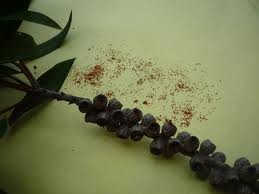I have a beautiful shrub in my front garden which is admired by all who see it in flower. So much so, that when it’s in full swing in May, I put a large name label on it so that people can read what it is, which at least stops some of them from knocking on the door to find out what’s making the red fireworks. The name of the plant I’m talking about is Callistemon Viminalis ‘Captain Cook.’ I put it in 16 years ago, when we first moved to this house — back then it was something of a novelty (the Australian man who ran our local plant shop also introduced me to tree ferns). Thankfully, these days you can find different species of Callistemon in all good garden centres, but people are still worried about how to look after them.

In their native Australia, bottlebrushes come in different shapes and sizes: some with weeping habit, others with pink rather than red flowers. They tend to cross-fertilise in the wild, so, if you want a true replica of the plant you are looking at, the only way to do it is with cuttings. It is possible to take cuttings from semi-ripe wood in July or August, but I’ve found that on the whole these have a very poor success rate compared to other shrubs.
The best method for Callistemon seems to be propagation by seed.
I’m sowing two lots in the greenhouse this February, the first is Callistemon Rigidus from Johnson’s seeds. The seed is so fine it should be sown on the surface of finely sieved compost. Unlike other seeds, bottlebrush seems to like sitting in a tray of water while it’s making its mind up to germinate. Take the seed tray out of the water once the seedlings have emerged and pot them on individually. The other batch I’m sowing in the greenhouse is from seed taken from the plant in my front garden. If you look at a bottle brush stem, you will see two (occasionally three) different groups of round seedheads. Those produced the previous year are the group closest to the tip, those produced two years ago, and the most viable in fact, are the seed heads further along the stem.

In order to collect the seed you will have to cut a stem then bring it into the greenhouse. After a day or two, the seed pods open and release their fine, dusty seed. These are sown as per above.
Bottlebrushes tolerate a range of soils (though they are not keen on chalk). They do need some frost protection, especially if you live further north, and young plants are more vulnerable to the cold than older ones. Once it gets going, Callistemon could not be an easier and less demanding plant, responding well to a good prune in late summer if you need to keep it in shape.


